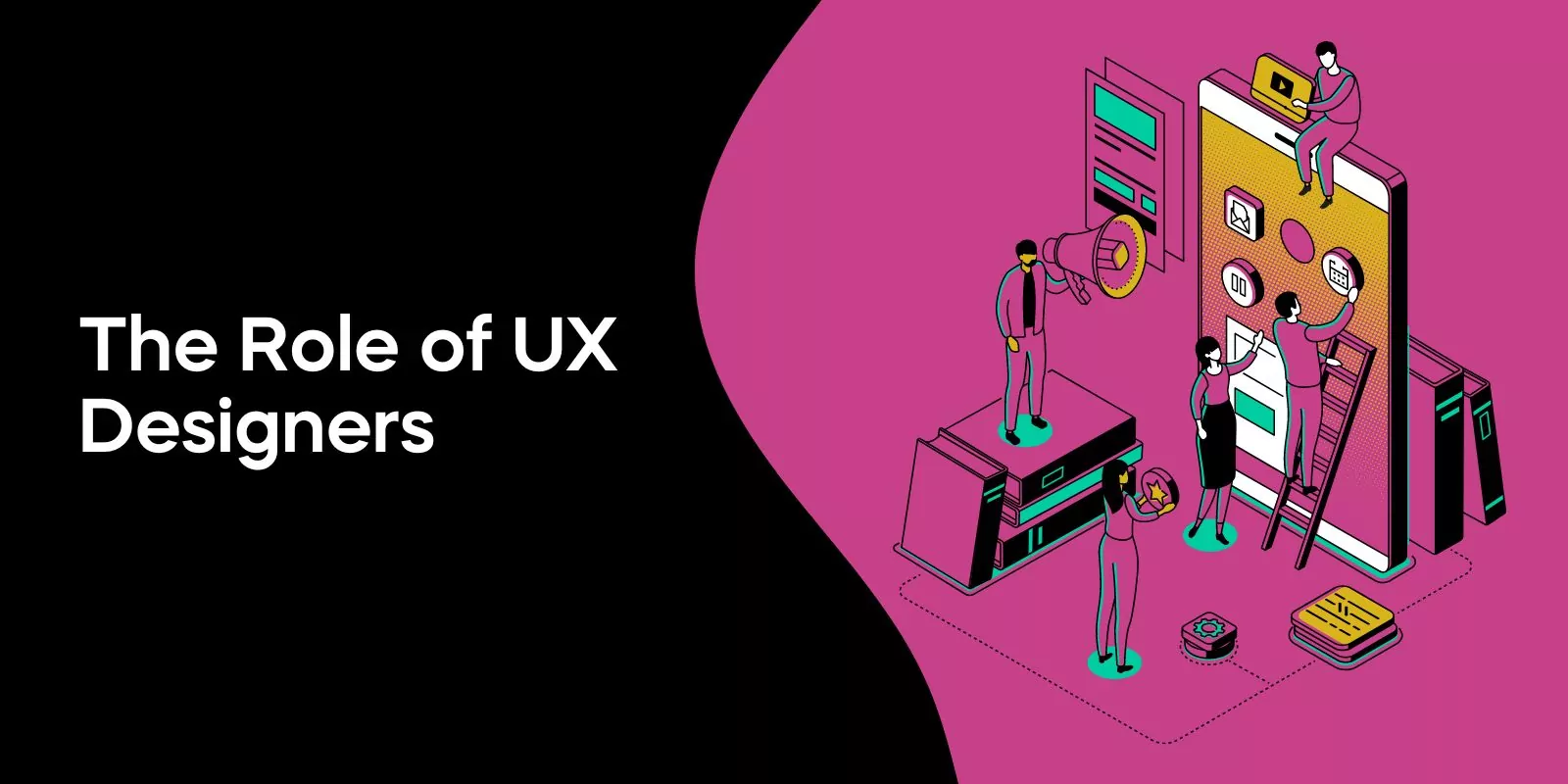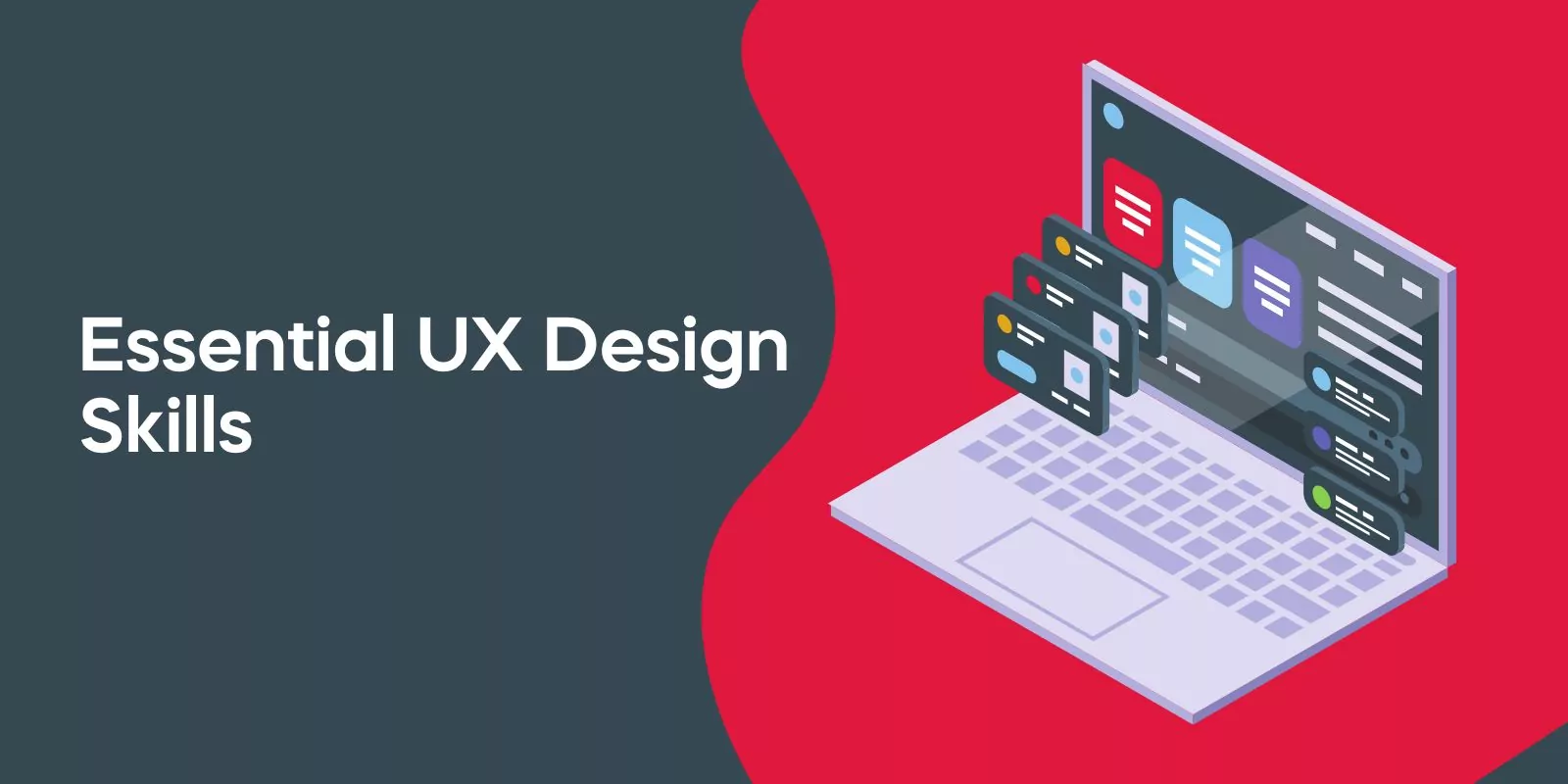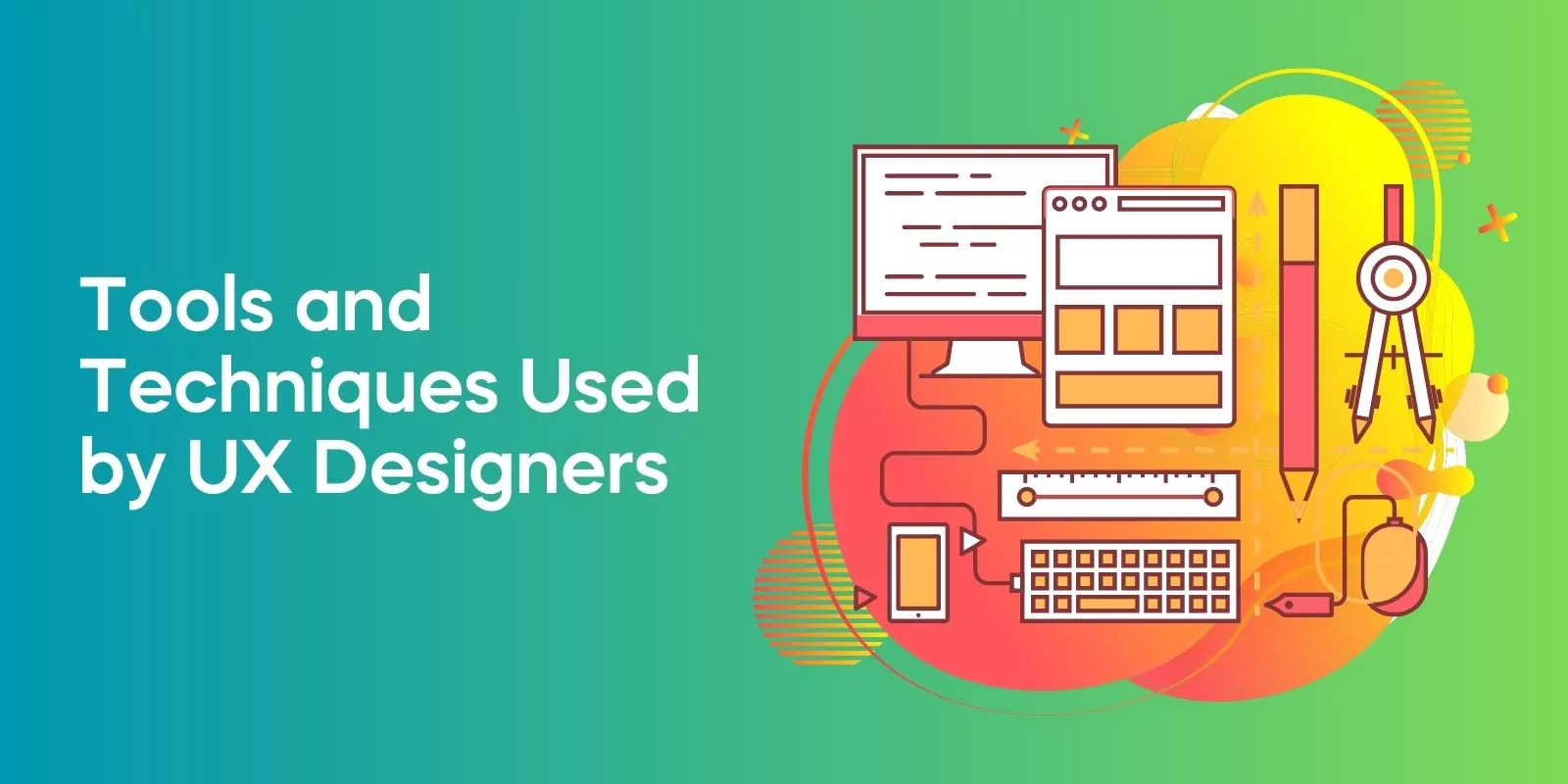Embark on an enlightening journey with this definitive guide as we unravel the multifaceted realm of UX design.
We dive deep into its core, unearthing the essence and significance of UX design, while highlighting the vital skills needed to thrive and create transformative digital experiences in this dynamic field.
Understanding UX Design
UX design, or User Experience design, is a user-centered approach that focuses on creating user-friendly, efficient, and enjoyable experiences for users by considering their needs, goals, and preferences.
With the increasing digitalization of our lives, UX designers play a vital role in ensuring that the products and services we interact with cater to our needs and expectations.
UX design is a process that involves understanding user behavior, motivations, and needs, and then creating a product or service that meets those needs.
It involves researching, designing, and testing user interfaces to ensure that they are intuitive and easy to use. UX designers must also consider the aesthetics of the product.
Defining UX Design
At its core, UX design is the process of designing products and services that optimize user experience, encompassing usability, accessibility, and aesthetics.
It is closely related to user interface (UI) design, which focuses on the visual and interactive elements of a product.
From the layout of a supermarket to the ergonomics of a vehicle, UX design can be observed in various contexts, with user interface design playing a significant role in creating a seamless user experience.
UX designers analyze user sentiment towards a system, focusing on factors such as usability, perceived value, practicality, and task execution speed.
This analysis is closely related to the field of human-computer interaction, which studies how people interact with technology.
Interaction designers, on the other hand, are responsible for creating the interactive elements of a product interface, such as typography, color palettes, animations, and navigational touch points (e.g. buttons and scrollbars).
User interface designers, a term often used interchangeably with interaction designers, also play a crucial role in this process.
UX designers create user flow diagrams, specifications and tech docs, websites and applications, mockups, presentations, personas, user profiles, and videos, all with a user-centered design approach that focuses on understanding and addressing the needs of the end user.
Importance of UX Design
UX design plays a pivotal role in customer satisfaction, brand loyalty, and business success, as it facilitates products and services to meet user expectations and needs.
Creating an optimal user experience is paramount for achieving customer satisfaction and cultivating brand loyalty. UX designers work to understand user needs and develop solutions that address those needs, ultimately leading to a better user experience.
UX design has the potential to positively affect product quality, customer satisfaction, long-term engagement, employee productivity, brand loyalty, time to market, conversion metrics, brand equity, and revenue.
By focusing on UX design, businesses can reduce development time and cost while ensuring that products and services meet user expectations and needs.
Components of UX Design
The components of UX design encompass research, information architecture, interaction design, visual design, usability, and accessibility.
Research plays a key role in UX design, as it assists in confirming or disproving assumptions, uncovering similarities among target audience members, and recognizing their requirements, objectives, and thought processes.
Information architecture is the practice of structuring information and content in an intuitive and user-friendly manner to facilitate user navigation within a product.
Interaction design is an integral part of UX design, focusing on the user’s interaction with the product. Visual design, on the other hand, leverages visual elements such as colors, images, and symbols to effectively communicate with its audience.
Usability testing is a crucial aspect of UX design, as it assesses how users interact with the product and determines if modifications are necessary to enable users to accomplish their desired tasks.
Accessibility, an essential component of UX design, entails the ease of access, use, and comprehension of a system, facilitating the shortening of the learning curve associated with the system.
The Role of UX Designers
UX designers play a vital role in creating user-centered products and services, focusing on understanding user needs and designing solutions that cater to them.
They are problem-solvers who invest time familiarizing themselves with the target audience, recognizing problems that require resolution, and formulating solutions to those user issues.
By understanding the user’s needs, UX designers can create products and services that are tailored to their needs.
They can also identify potential problems and develop solutions that address those issues. This helps to ensure that the user experience is as smooth as possible.
UX Designer’s Responsibilities
A UX designer is responsible for constructing user-oriented designs that are user-friendly and straightforward.
They strive to comprehend the requirements and objectives of users and create designs that satisfy those requirements. Some of their responsibilities include user research, user testing, wireframing, prototyping, and design thinking.
UX designers also play a crucial role in presenting their ideas and designs to key stakeholders as part of their regular activities.
By showcasing their thought process and design rationale, they can gain valuable feedback and buy-in from stakeholders, ensuring a smooth development process and a successful final product.
Collaboration with UI Designers
UX and UI designers collaborate to craft a unified product. UX designers prioritize understanding user needs and designing solutions that satisfy them, while UI designers concentrate on the visual design of the product.
Comprehending each other’s fields is essential for UX designers and UI designers to collaborate efficiently. It is imperative that UX designers understand UI design principles and UI designers understand UX design principles to create a successful product.
Initiating and maintaining collaboration between UX and UI designers enables them to develop a product that satisfies user requirements.
It also facilitates the identification of potential issues at an early stage, allowing for their resolution before they become a problem.
Maintaining open communication enables UX designers and UI designers to remain abreast of the progress of the project and promptly address any arising issues.
UX Design Process
The UX design process typically involves user research to understand user needs and goals, prototyping to create a product that meets those needs, testing to evaluate the product and identify areas for improvement, and iteration to refine the product.
User research is the foundation of the UX design process, as it provides insights into the target audience’s needs and preferences.
Prototyping then allows for the creation of a tangible representation of the design, which can be tested with users to ensure its effectiveness.
Usability testing can reveal any issues or pain points that users encounter, and the design can be iterated on to address these concerns, ultimately leading to a more successful and satisfying user experience.

Award-Winning
Sales Funnel & Website Expert
Ready for Revenue – Not Just “Traffic”?
- Websites that Work: Clean, fast, built to convert – no design fluff.
- Funnels that Sell for You: Step-by-step paths that turn clicks into paying customers.
- SEO That Hunts Buyers: Show up exactly when prospects reach for their wallets.
Essential UX Design Skills
UX designers need a combination of technical and soft skills to excel in their roles, including design, research, and communication skills.
These skills enable them to create user-centered solutions that cater to the needs and preferences of their target audience.
UX designers must be able to understand the needs of their target audience and create solutions that meet those needs.
They must also be able to communicate effectively with stakeholders and collaborate with other team members. Additionally, they must have a library.
Technical Skills
Technical skills for UX designers include proficiency in design tools, coding languages, and user research methods.
UX designers typically employ a variety of design tools to create user interfaces, such as Adobe Photoshop, Sketch, Figma, and InVision. Knowledge of coding languages like HTML, CSS, and JavaScript is also vital for constructing user interfaces.
User research methods employed by UX designers include interviews, surveys, usability testing, and A/B testing.
These research methods allow them to gain insights into user needs and preferences, ensuring that their designs are tailored to the target audience and provide a positive user experience.
Soft Skills
Soft skills, such as empathy, problem-solving, and adaptability, are essential for UX designers to understand user needs and create effective solutions.
Empathy allows UX designers to put themselves in the user’s shoes, enabling them to better comprehend and address user pain points.
Problem-solving skills help them devise innovative solutions to user issues, while adaptability ensures they can adjust their designs based on user feedback and changing requirements.
Effective communication and collaboration skills are also crucial for UX designers, as they often work with multidisciplinary teams and need to present their ideas and designs to key stakeholders.
These soft skills, combined with their technical expertise, make UX designers well-rounded professionals capable of creating user-centered products and services.
Continuous Learning
Continuous learning is essential for UX designers to stay updated with industry trends, tools, and best practices. As the field of UX design is ever-evolving, it is crucial for UX designers to stay abreast of the latest developments and adapt their skills accordingly.
Aspiring UX designers can engage in continuous learning through various means, such as attending conferences and workshops, reading industry blogs and publications, engaging with online communities, and taking online courses.
By staying informed and adapting to the changing landscape of UX design, professionals can ensure they deliver superior design solutions and stay competitive in the job market.
Tools and Techniques Used by UX Designers
UX designers use various tools and techniques to create user-centered designs, conduct research, and analyze feedback.
From wireframing and prototyping software to design thinking methodologies and user research techniques, these tools and techniques enable UX designers to develop effective and user-friendly products and services.
These tools and techniques help UX designers understand user needs, create user-friendly designs, and test their designs to ensure they meet user expectations.
By using these tools and techniques, UX designers can improve their UX.
Design Tools
Design tools used by UX designers include wireframes, prototyping, and graphic design software. Some of the most commonly employed wireframing and prototyping tools are Balsamiq, Adobe XD, Figma, and Sketch.
Collaboration tools like Miro and FigJam are also widely used to facilitate teamwork and ensure that all team members are on the same page.
For graphic design, Adobe’s Creative Cloud offerings, such as Photoshop, Illustrator, and Adobe XD, are widely accepted as industry standards.
Additionally, Figma has become a popular choice among UI/UX designers, due to its features of real-time collaboration, easy file sharing, and accessibility from any internet-enabled device.
User Research Methods
User research methods employed by UX designers include surveys, interviews, usability testing, and analytics.
User interviews provide valuable feedback from users regarding their experiences with a product or service, while surveys allow UX designers to gather insights into user interactions and identify areas for improvement.
Usability testing involves observing users interacting with a product or service to identify potential areas of improvement, and analytics involves analyzing data from user interactions to identify trends and patterns.
By employing these user research methods, UX designers can gain a thorough understanding of user needs and preferences, ensuring that their designs are tailored to the target audience and provide a positive user experience.
Analyzing and Implementing Feedback
UX designers analyze and implement feedback from user research and testing to refine and improve their designs.
They gather and analyze data related to user experience and interaction with the product, recognizing patterns and themes in the feedback, prioritizing problems to be addressed, and devising solutions to address those problems.
UX designers can collect feedback through a variety of methods, including interviews, polls, user surveys, focus groups, user forums, in-app user feedback, and usability tests.
By examining and incorporating feedback from user research and testing, UX designers can refine and enhance their designs, ultimately leading to a more successful and satisfying user experience.
UX Design in Different Industries
UX design plays a significant role in various industries, including web and mobile applications, e-commerce, and gaming. In each of these industries, the focus is on creating user-centered experiences that cater to the needs and preferences of the target audience.
Good UX design is essential for creating a successful product, as it ensures that users have a positive experience when interacting with the product. It also helps to increase user engagement and loyalty, as well as improve the user experience.
Web and Mobile Applications
UX design is crucial for creating user-friendly and engaging web and mobile applications that cater to user needs and preferences.
By focusing on usability, accessibility, and aesthetics, UX designers can ensure that users have a seamless experience when interacting with web and mobile applications.
Examples of UX design in mobile apps include Duolingo’s simplified user flows, Calm’s sign-up flow that reduces cognitive load, and Spotify’s end-of-playlist experience.
In web applications, UX design plays a vital role in ensuring users can easily navigate and interact with websites.
A prime example of great UX design in a web application is Netflix’s website. The intuitive interface, personalized recommendations, and easy-to-use search functionality all contribute to a positive user experience that keeps subscribers engaged and coming back for more.
E-commerce and Retail
In e-commerce and retail, UX design helps create seamless shopping experiences, driving customer satisfaction and loyalty.
By considering user experience and adhering to e-commerce UX design principles, retailers can augment sales and customer loyalty.
The benefits of UX design in e-commerce and retail include enhanced customer satisfaction, augmented customer loyalty, and raised sales.
UX design also facilitates the formation of a more efficient and satisfying shopping experience, which can lead to augmented customer involvement and higher conversion rates.
Examples of successful e-commerce UX design can be seen in popular online retailers such as Amazon and eBay, where easy navigation, clear product information, and secure payment processes contribute to a smooth and enjoyable shopping experience.
Gaming and Entertainment
UX design in gaming and entertainment focuses on creating immersive and enjoyable experiences for users, enhancing engagement and retention.
UX designers in this industry strive to create a cohesive and immersive experience for the player by analyzing player behaviors and thought processes. They also use user testing to gain feedback and make the necessary modifications accordingly.
By focusing on the user’s experience and providing clear and effective feedback from the game, UX designers can ensure that players remain engaged and invested in the game.
Examples of successful UX design in gaming include popular titles such as Fortnite, where the intuitive interface, engaging gameplay, and strong community features contribute to a highly immersive and enjoyable gaming experience.
Transitioning into a UX Design Career
Transitioning into a UX design career involves acquiring relevant skills, building a portfolio, and networking with industry professionals.
By focusing on these areas, aspiring UX designers can set themselves up for success in this exciting and rewarding field.
Developing the necessary skills requires dedication and hard work.
UX designers must be knowledgeable in areas such as user research, user interface design, and usability testing. They must also be familiar with the latest design trends.
Educational Pathways
Educational pathways for aspiring UX designers include formal degrees, online courses, and certifications from reputable institutions.
Employers typically prefer candidates with a bachelor’s degree in a relevant field such as graphic design, interaction design, psychology, or computer science.
However, it is possible to enter the field of UX without a degree through alternative pathways, such as attending a UX bootcamp or teaching oneself UX design.
The Interaction Design Foundation offers three courses tailored to those pursuing a career in UX design: The Beginner’s Guide, Get Your First Job as a UX (or Interaction) Designer, and User Research – Methods and Best Practices.
By investing in education and acquiring the necessary skills, aspiring UX designers can set themselves up for a successful career in this rapidly growing field.
Building a Portfolio
Building a strong portfolio showcasing UX design projects and skills is essential for demonstrating expertise and attracting potential employers.
Aspiring UX designers can construct a portfolio by creating projects, engaging in hackathons, and taking part in online challenges.
Showcasing work on platforms such as Dribbble and Behance can also help gain visibility and credibility in the industry.
A successful UX design portfolio should include 3-5 comprehensive case studies that effectively illustrate abilities and methodology.
By presenting a well-rounded portfolio that highlights a diverse range of skills and projects, aspiring UX designers can demonstrate their value and expertise to potential employers and clients.
Networking and Job Hunting
Networking and job hunting involve connecting with industry professionals, attending events, and leveraging online platforms to find job opportunities and gain insights into the field.
Attending events, joining online communities, connecting with people on social media, and reaching out to UX designers directly for advice are all effective strategies for networking with industry professionals.
Aspiring UX designers can also create a strong online presence by developing a portfolio website, engaging with other professionals on social media, and publishing blog posts or articles related to UX design.
By actively participating in the UX design community and showcasing their expertise, aspiring UX designers can increase their chances of landing a job in this competitive field.
Frequently Asked Questions
What exactly does a UX designer do?
As a UX designer, your primary role is to ensure that users have a positive and meaningful experience when interacting with a product. This involves analyzing user needs, creating interactive designs, validating solutions through testing, and constantly refining the user’s journey.
You are ultimately responsible for ensuring that products provide a delightful, intuitive, and useful experience.
Does UX involve coding?
In short, no. Coding is not a requirement for UX design and the majority of UX designers do not possess coding skills. While knowing code can be beneficial for some aspects of UX design, it’s by no means essential to practice in the field.
Ultimately, each role requires different skill sets and understanding the basics of coding can enhance a UX designer’s knowledge but isn’t necessary for success.
What is difference between UI and UX?
UX and UI are two separate disciplines, but they work closely together. UX design is focused on the user’s journey and how to optimize their experience, while UI focuses on how to make that journey aesthetically pleasing and intuitive. In short, UX is the process of making a product easy to use, while UI is the graphical layout and look of the product.
Good UX and UI design can make a product more enjoyable to use, and can even increase sales. It’s important to understand the differences between the two disciplines.
Is UX design like coding?
UX Design and coding are related, but not the same. While UX design focuses on understanding users and creating user interfaces, coding is the language used to actually build the product.
For a UX designer, a foundational knowledge of code can help them communicate more effectively with developers and create better user experiences.
What are the key components of UX design?
UX design is composed of several important components, such as research, information architecture, interaction design, visual design, usability, and accessibility. These elements work together to create an effective user experience.
Conclusion
In conclusion, UX design is a multifaceted field that plays a crucial role in various industries, shaping our everyday experiences.
By acquiring essential technical and soft skills, building a strong portfolio, and networking with industry professionals, aspiring UX designers can embark on a rewarding and fulfilling career.
Whether you’re a seasoned professional or just starting your journey in the world of UX design, the opportunities for growth and innovation are endless.








